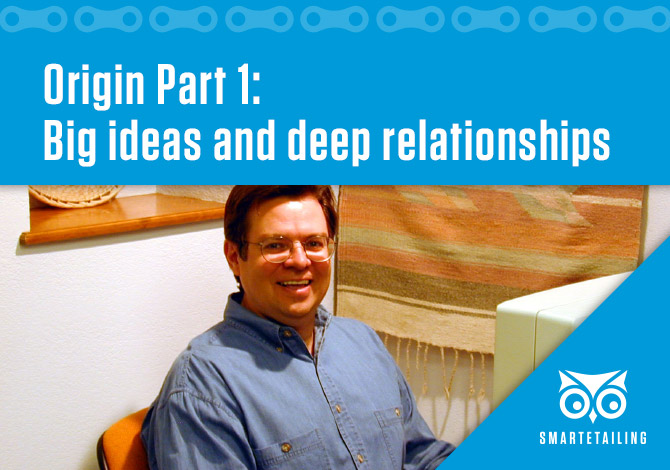
We are celebrating the 20th anniversary of the founding of SmartEtailing by reflecting in this blog series on how the bike industry’s original tech startup came to be.
Two decades after its founding, SmartEtailing has come a long way from its humble beginnings in the basement of co-founder Mark Graff’s home in Boulder, Colorado (pictured above) .
Today, with close to 1,000 specialty retailers using their website solution, nearly 2,000 retailers using their product locator software, and 60 employees, it’s hard to believe where it all began.
In 1999, SmartEtailing was an internet startup conceived during the first Dot-com boom – an idea crafted by a veteran bicycle retailer and a marketing entrepreneur who together saw the web as a way to add another location for a brick and mortar bike shop.
While nearly half of the internet startups from this era failed before 2004, SmartEtailing has endured in large part because of the company’s deep understanding of local bicycle retailers and a commitment to always putting the needs of local bike shops and their local customers before their own.
The perfect partnership
Graff, who was president and general manager of cycling industry marketing company Catalyst Communications for 11 years, was in Colorado. Brenner, a longtime retailer who ran a perennial top bike store in Ventura, California, knew Graff as a client of Catalyst.
As a retailer, Brenner was seeing the popularity of websites grow and, with it, how many of his customers were referring to things they saw online. He had already published his store’s first website yet he wasn’t satisfied with the consumer experience. He was also frustrated with the time even a simple website was taking to build, considering how much he needed this time to work on other areas of his business.
Graff, who already had years of retail marketing experience, was watching a new media form emerge at a time when he was also ready to create new opportunities for himself. He was keen to explore a business tied to the web.
The pair had become friends and sometimes mused about working on something as partners. As Graff stepped away from his current job, Brenner called to invite him to his home for the weekend. The two would just brainstorm ideas. As they talked, they conceived of an internet-based service for retailers. This was before the term “cloud” had joined the lexicon of popular culture. Yet, their idea was truly of an early cloud-based service.
“In 1999 all the attention was on the global reach of the internet, but Barry and I always saw the power of the internet being most effective locally,” Graff shared.
No Comments Yet
Let us know what you think